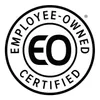- Hard hat attached hearing protection with Noise Reduction Rating (NRR) of 24 dB for moderately high noise exposures
- Fits a wide range of industrial safety hard hats, including 3M™ H-700 Series Hard Hats (sold separately)
- Attaches directly to many hard hats without an adapter
- Earcups tilt to ensure a customized fit and comfort for individual users
Brands |
N/A PELTOR™ |
Attenuation Rating (SNR) |
N/A 24 dB |
Corded |
N/A No |
Canadian Standards Association (CSA) Class |
N/A Canadian Standards Association (CSA) Class A |
Dielectric |
N/A No |
Earmuff Style |
N/A Hard Hat Attached |
Electrically Insulated |
N/A No |
Hearing Protection Style |
N/A Hard Hat Attached |
Metal Detectable |
N/A No |
Moisture Resistant |
N/A No |
Product Color |
N/A Black Yellow |
Product Series |
N/A X Series |
Product Type |
N/A Earmuff |
Shape |
N/A Earmuffs |
Sizes |
N/A One Size Fits Most |
Package Type |
N/A Pair |
Units Per Package |
N/A 1 |
Recommended Applications |
N/A Commercial Buildings Design & Construction Heavy Infrastructure Industrial Maintenance |
|
N/A
When it comes to protecting workers' hearing, there is no one-size-fits-all solution. |


